LAST OCTOBER MY WIFE AND I SPENT two weeks driving around Namibia’s Etosha National Park in a VW Polo (we originally dreamed of a 4×4 with a rooftop tent, but that didn’t happen), making the most of the dry season when the wildlife congregates around the scattered waterholes. Settling for the car freed up some budget to go on an exciting dune ride at Walvis Bay and finish the trip off with a hot-air balloon flight over the Namib. We’d gone for the wildlife and ended up finding so much more in the solitary desert landscapes, the beautiful rock art sites, and the raw South Atlantic coast.
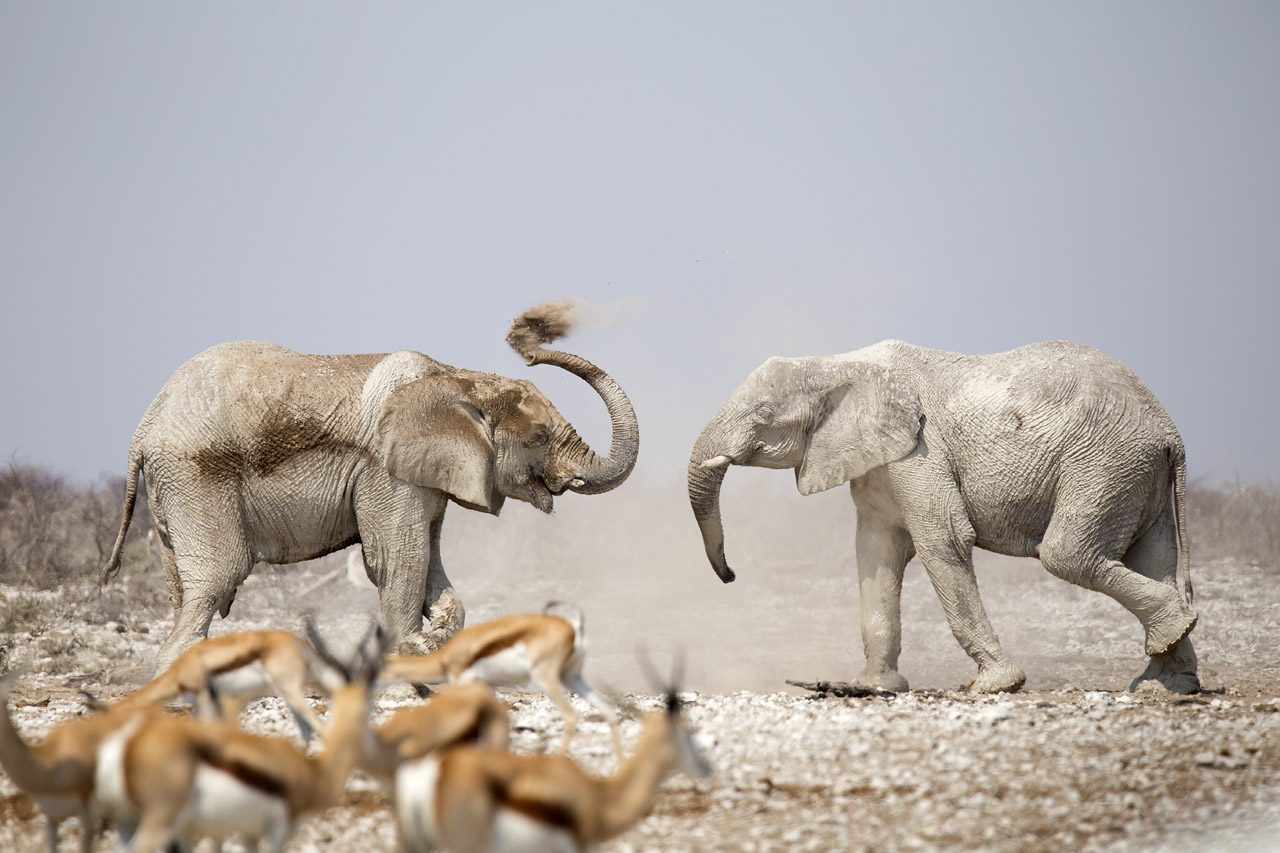
Elephants facing off
Photo: After a session of mud splashing and back rubbing things can get a bit touchy, especially when it involves 30 elephants sharing the small Nebrowni watherhole in Etosha. These two elephants seemed to be getting on each other’s nerves and were engaging in a kind of power face-off.

Mating lions
Photo: We hit the jackpot on our first game drive in Etosha. Within a few minutes we were watching a couple of lions in the midst of a mating session. For the better part of an hour they were just lying around, too tired to move. Suddenly the male got up, approached the female, did his thing, and plopped back down.
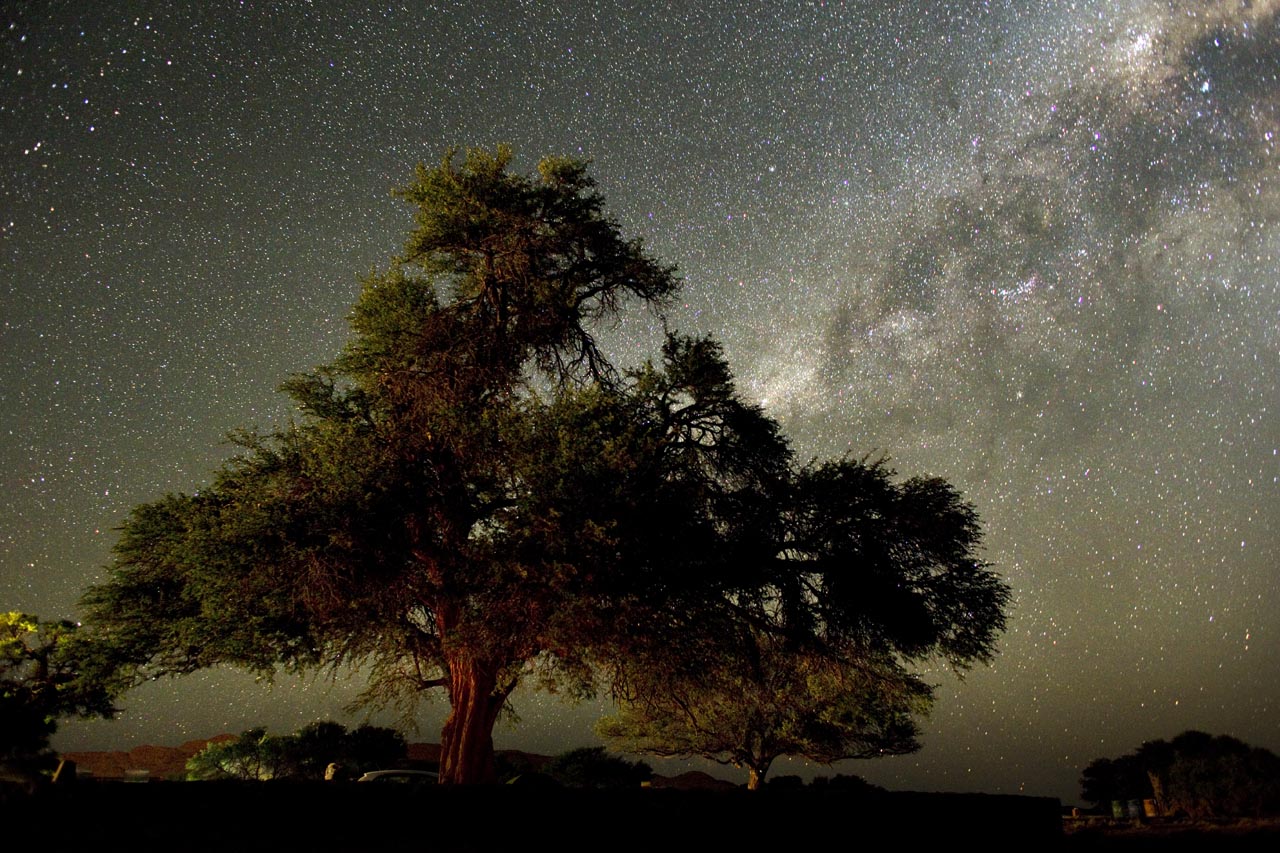
Camping under the stars
Photo: The camping site at the entrance to Sossusvlei is an oasis in the desert. There’s no luxury in the material sense of the word, but having this tree as the cover to our tent and those stars as our night entertainment was a real treat. What didn’t work so well was our campfire-cooked pasta: burnt pot and sticky spaghetti.
Intermission
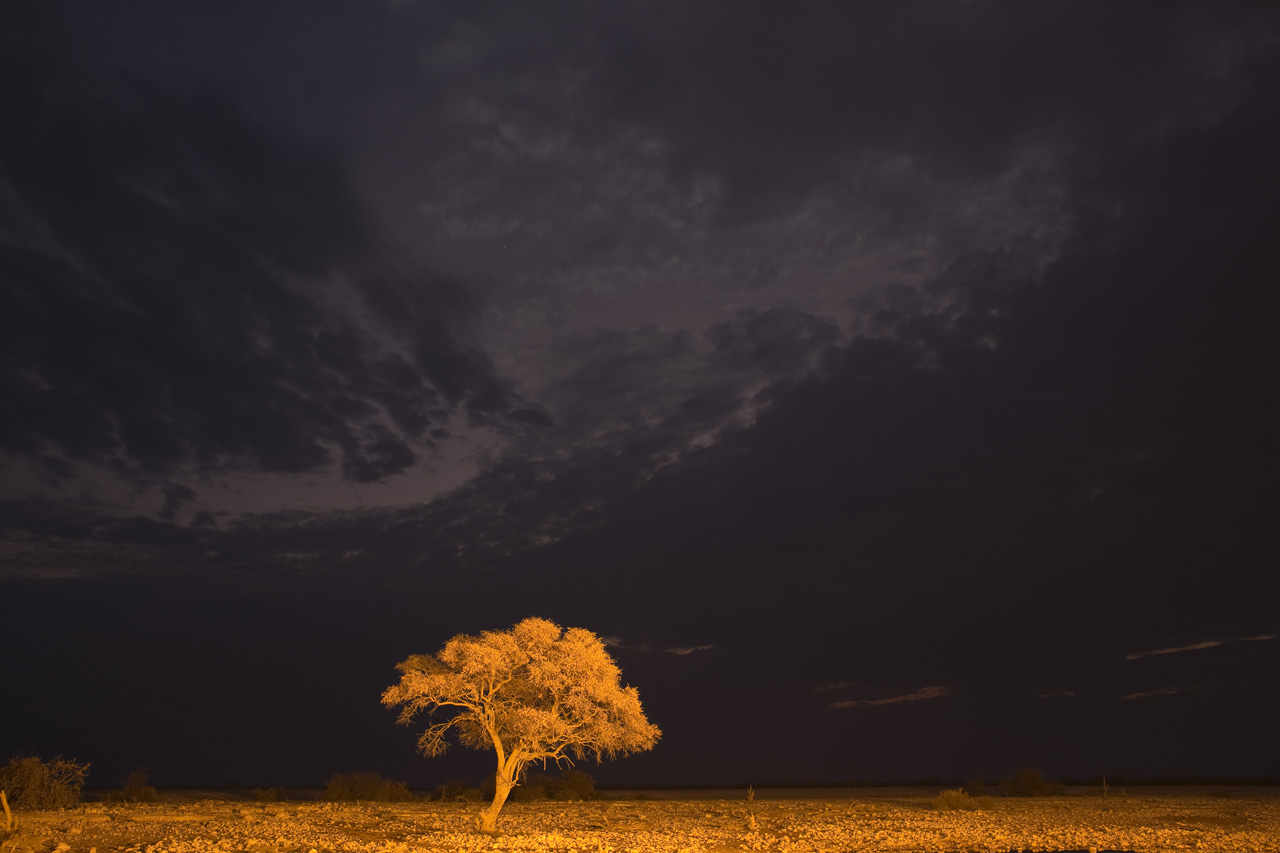
Acacia
Photo: The majestic acacia at the floodlit Okaukuejo waterhole in Etosha appears to glow under the artificial lights. The waterhole offers campers the rare opportunity to watch the nighttime behavior of various species from the comfort of a tribune-like viewing area. Without the restrictions of our vehicle we kicked back with a beer and enjoyed the show.
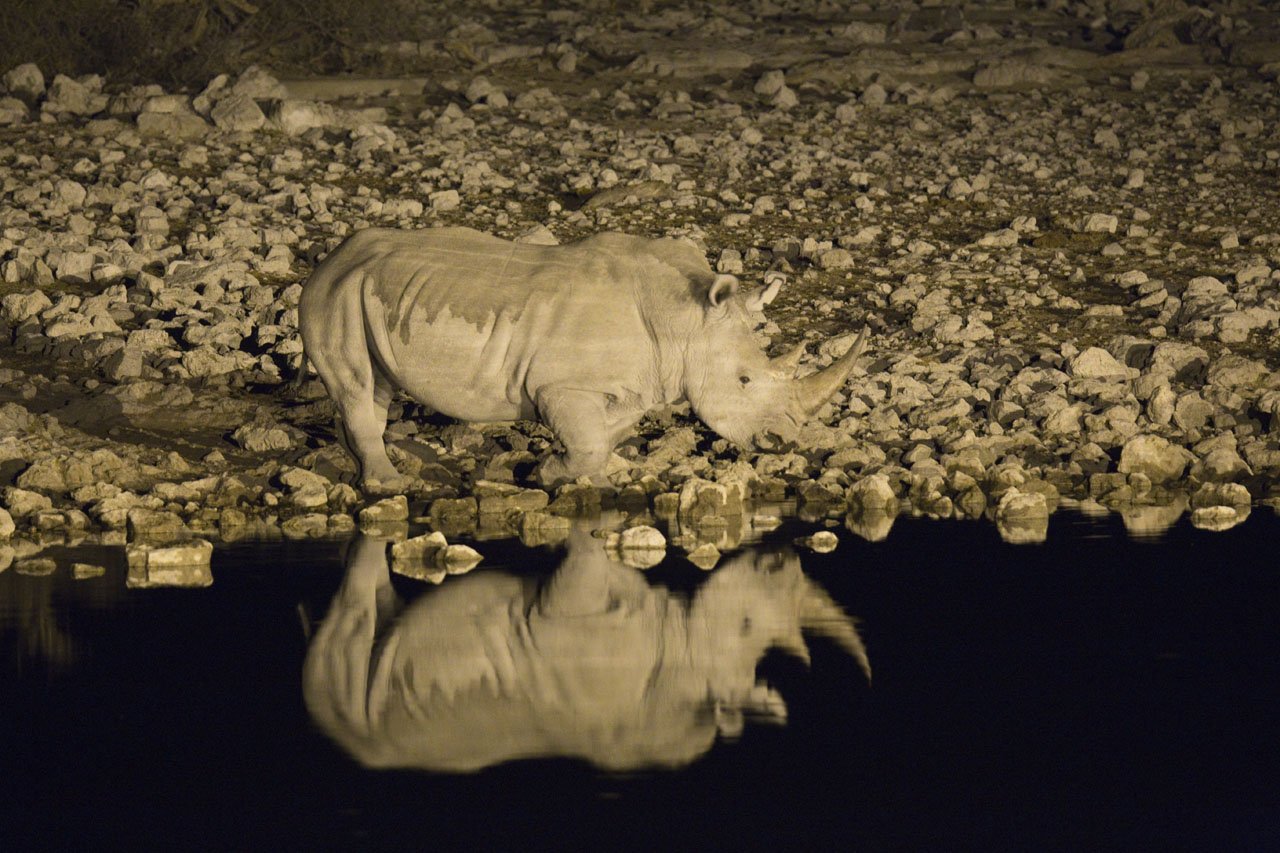
Patience pays off
Photo: We’d been quietly waiting for 20 minutes for something to happen at the floodlit Okaukuejo waterhole. It was close to 10pm and our hopes were thinning out when far in the distance some bulky figures appeared in the landscape. It took the three rhinos about one hour to reach the water at a super slow-mo pace.
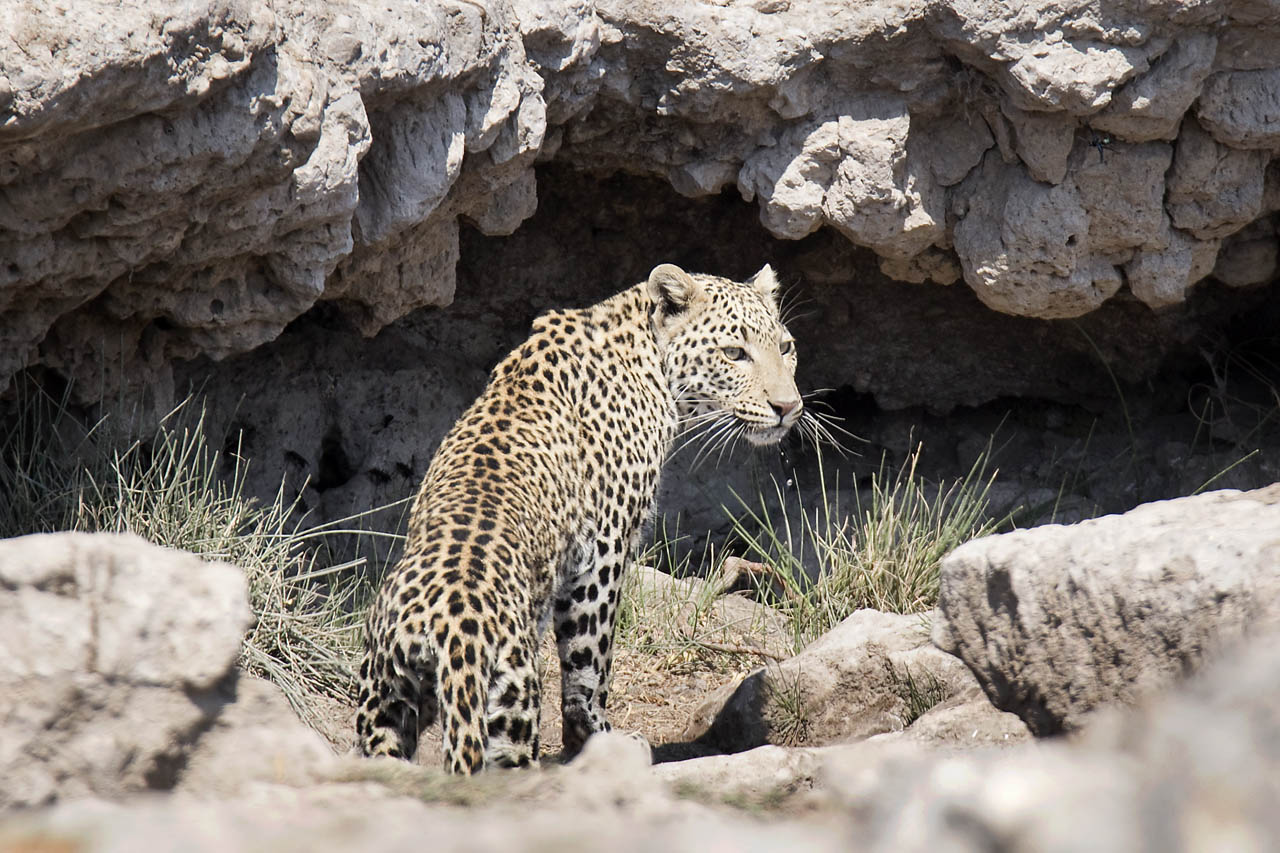
Rare spotting of a leopard
Photo: Finding a leopard in the 22,912-square kilometers of Etosha is a challenge. In five days of game-driving we were lucky to have two encounters, one of which lasted a mere 10 seconds. Here, at Ngobib, we spotted one drinking and climbing out of the hole. It looked at us, turned around and disappeared into the tall yellow grass. Two minutes imprinted on my mind forever.

Elephant in the road
Photo: When self-driving through Etosha you should be aware of what the guided jeep tours are doing. They tend to communicate big sightings with each other, maximizing their chances of having happy clients at the end of the day. We overheard the driver of this jeep saying a lion had been spotted and followed it for 20 minutes to Kalkheuwel waterhole where eventually we saw three of them. On the way there a passing elephant slowed them down.
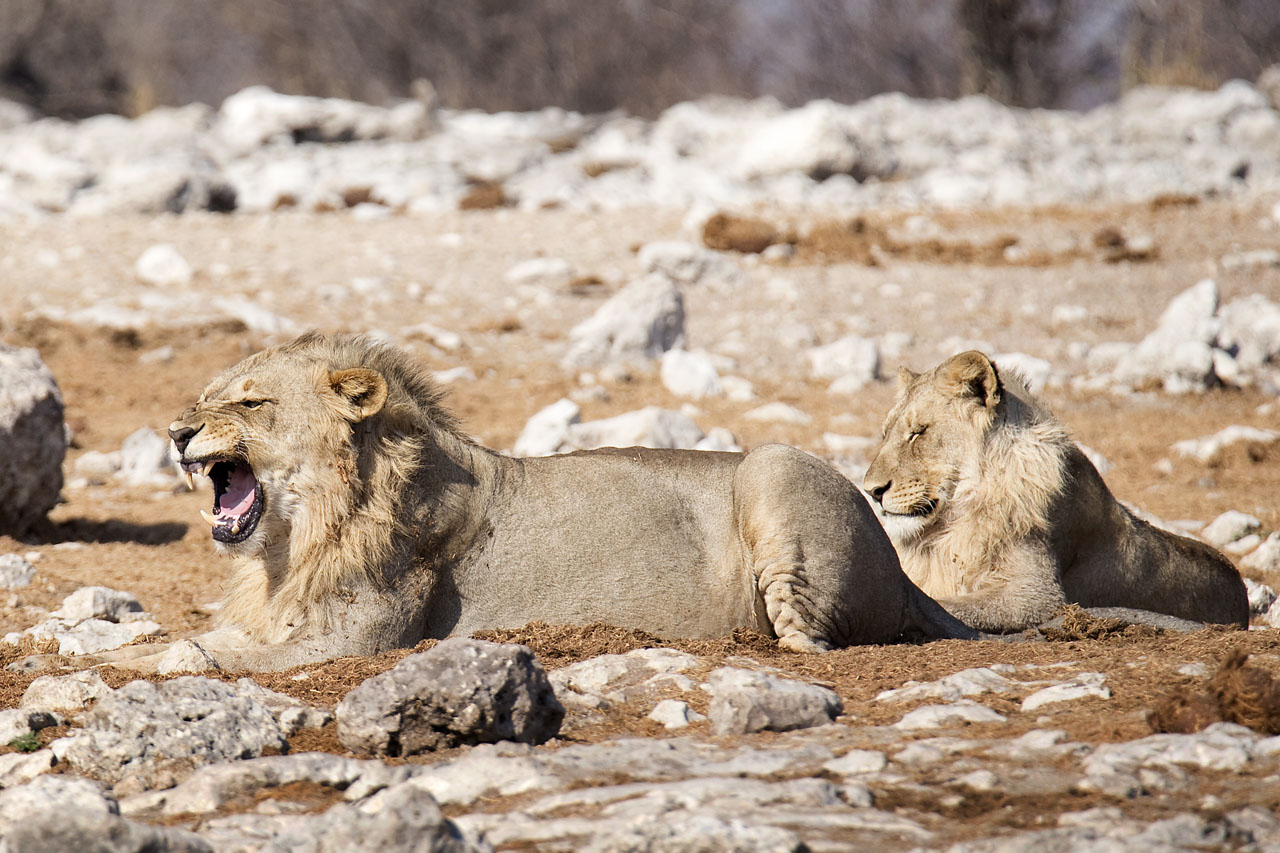
Lions at Kalkheuwel
Photo: Lion viewing requires a lot of patience. They tend to sleep for the bigger part of the day and more often than not one will see them just lying around. We spent an hour watching these two at Kalkheuwel, Etosha. In that whole time they were only active for about a minute. The more interesting part was observing the cautious reaction of the approaching springbok and listening to their ‘alarm’ calls.

Cheetahs
Photo: Cheetahs can be hard to observe as they easily camouflage in the tall grass. We were driving towards the Namutoni camp and saw at least 10 vehicles parked on a side road, a clear sign that something interesting was going on. Instead of parking next to them we chose to stay on the main road. It was a good call as the cheetahs started walking straight in the direction of our car.
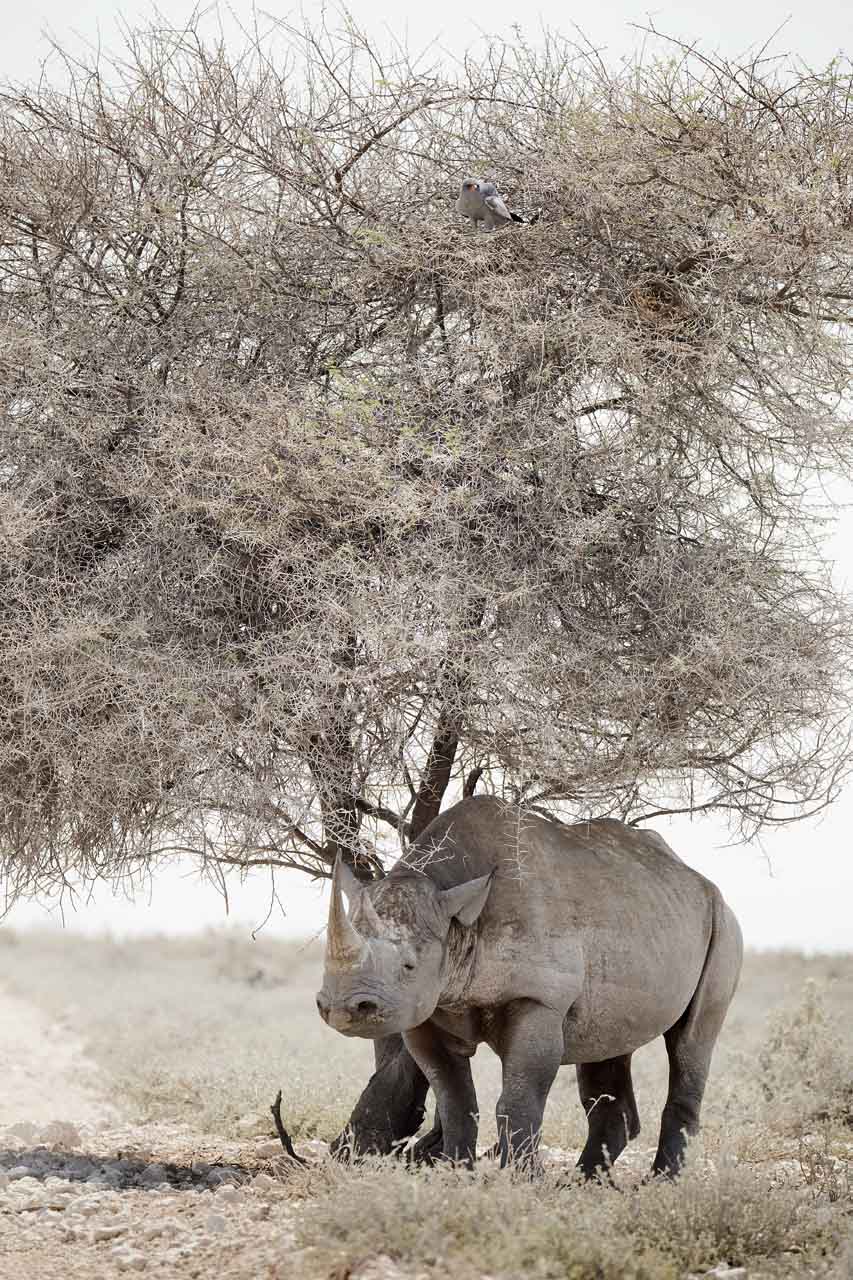
Rhino seeking shade
Photo: Sightings in Etosha are not restricted to waterholes, as we learned from this rhino spotted on the side of the main road. It chose to stand under the only tree in hundreds of meters in what looked like a comedic attempt at getting some shade.
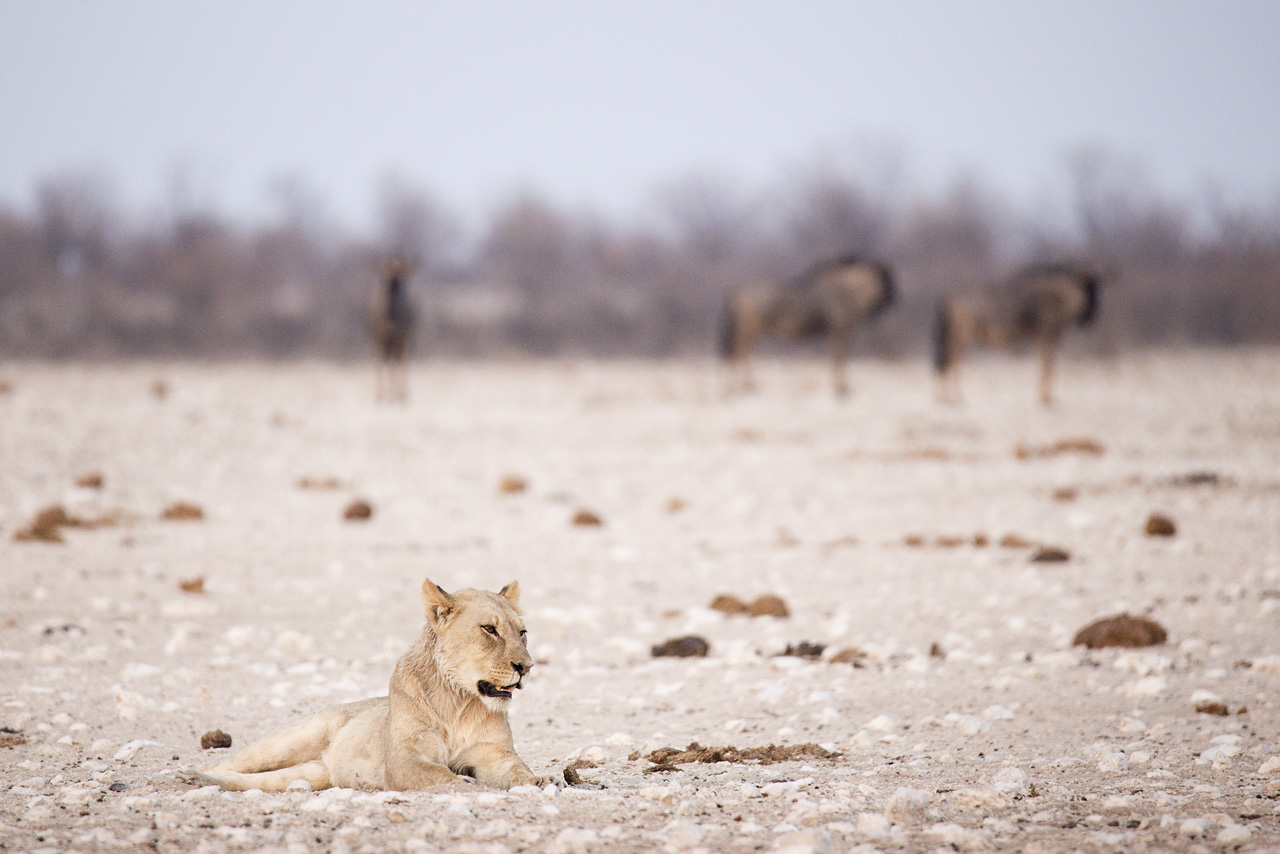
Last shot of a lion
Photo: This is the last photo I took in Etosha after five days of game drives. We’d pretty much given up hope of seeing one more lion and were already driving out when we spotted some activity at the Gemsbokvlakte waterhole. We drove in and to our surprise there were three lions in the area. One of them had blood all over her face; they must have been eating just moments before. The light was perfect but we had to reach the main gate before dark and were only able to squeeze a few shots.
Intermission
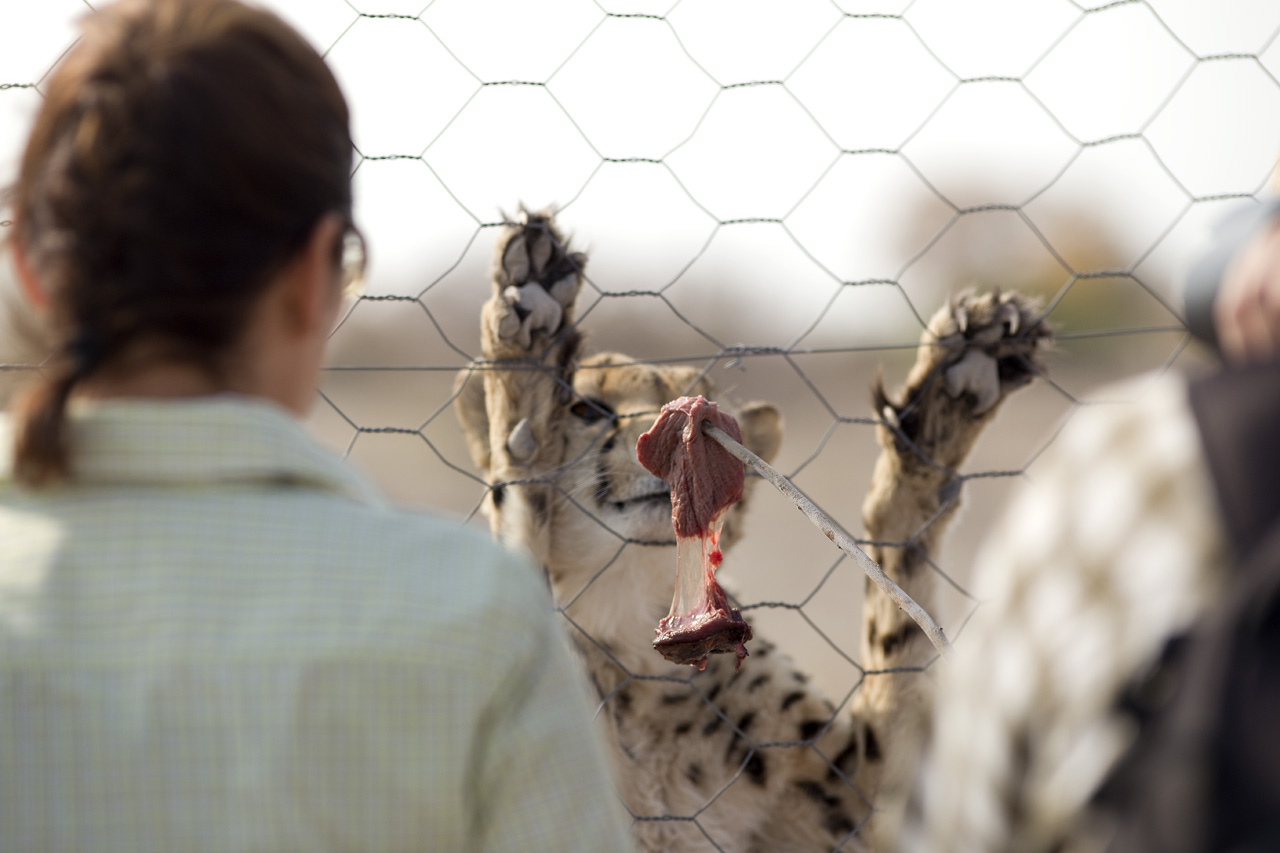
El Dorado farm
Photo: We spent a night outside Etosha in a farm called El Dorado. As many others in the area they’ve had problems with cheetahs and leopards killing their cows or goats. The workers at the farm had captured a couple of them and kept them in relatively big compounds. In order to do so they need governmental permission, which according to our guide is quite complicated to get. Tourists who don’t manage to see the cats within the park’s borders have here a chance to get up close by paying a small fee.
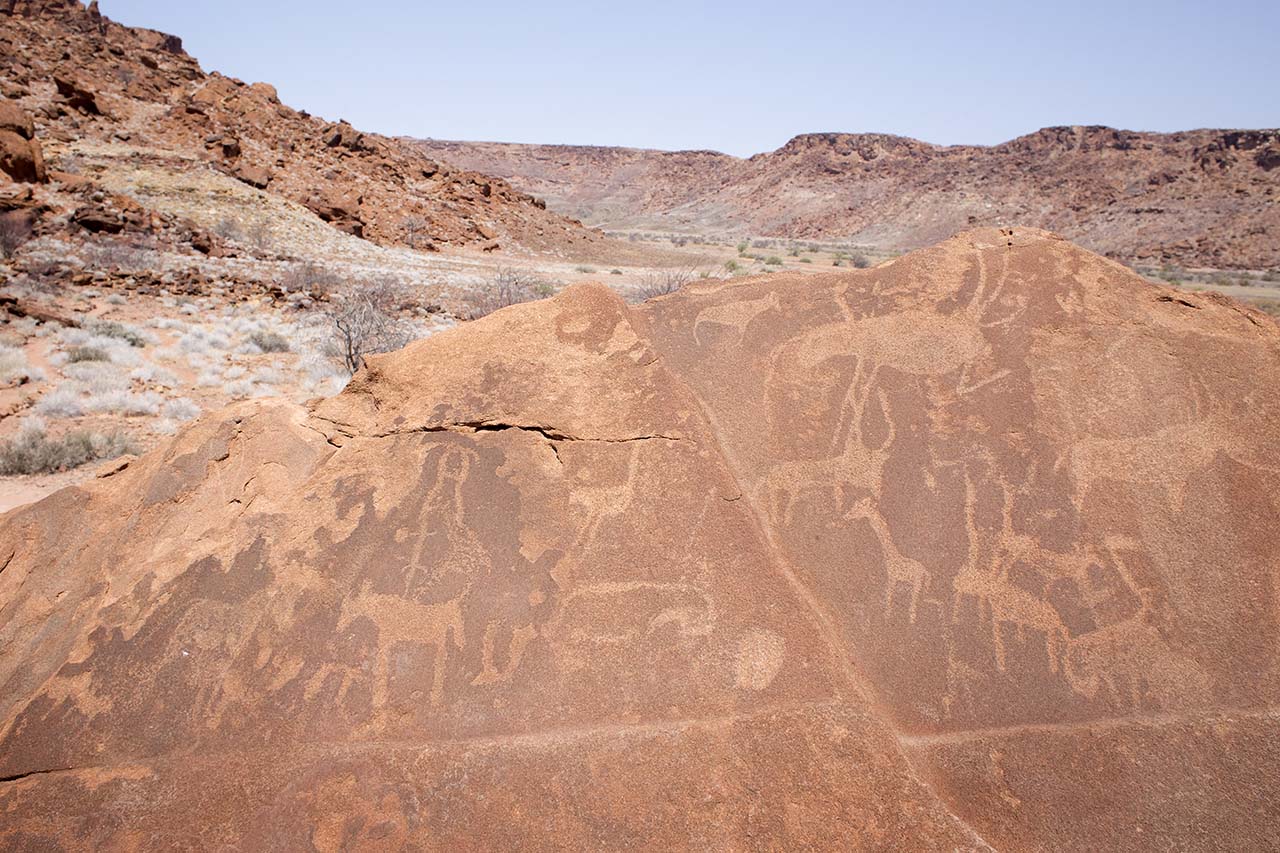
Twyfelfontein
Photo: Walking along the scattered boulders and the rock art of Twyfelfontein is a thought-provoking experience; seeing the messages left behind by people living 5,000 years ago was humbling. It actually made me feel a deeper connection to our human history and being part of something much bigger than myself.
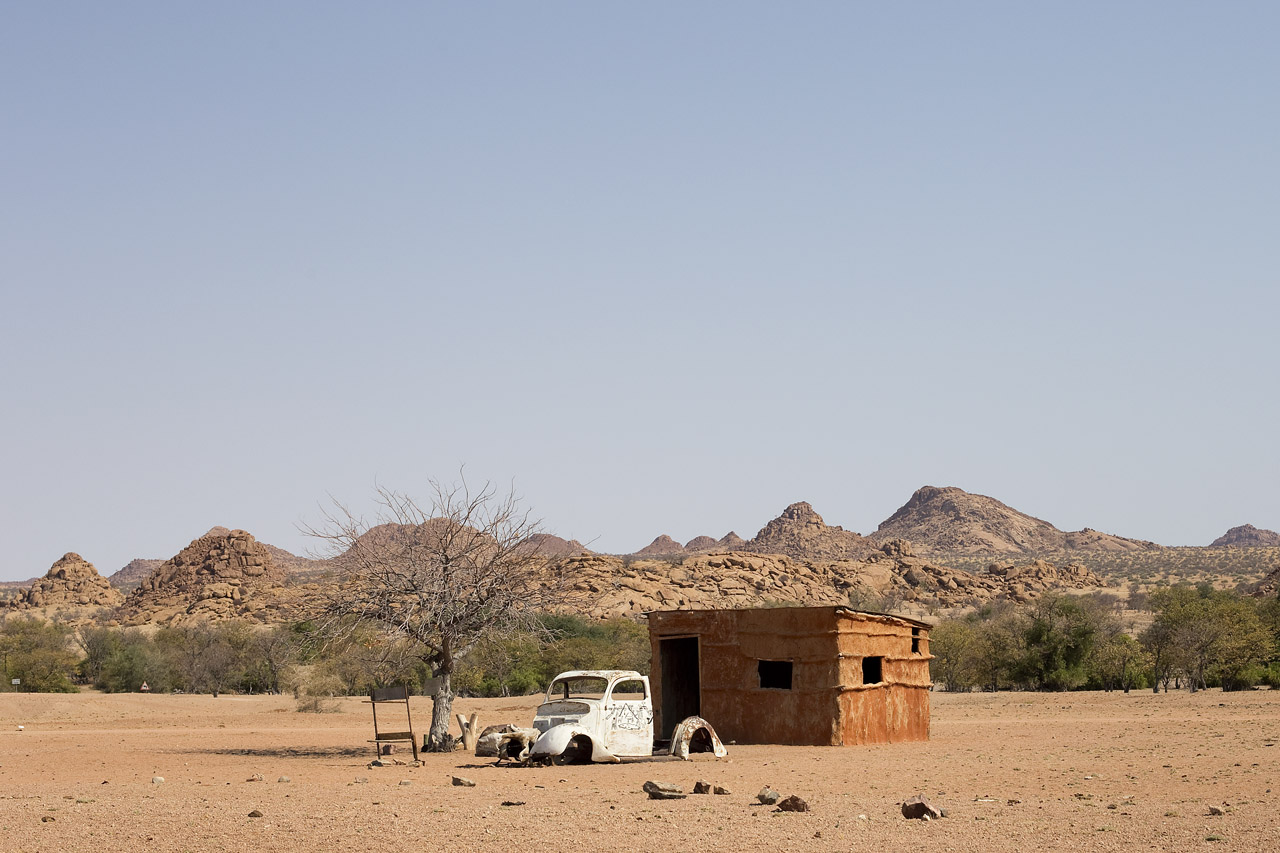
Abandoned car
Photo: While driving across Damaraland we were often the only car for hundreds of kilometers. It’s mostly a desert landscape dotted by boulders and jagged hills with few signs of human activity. Some of the more visually interesting things are abandoned cars rotting away on the side of the road.
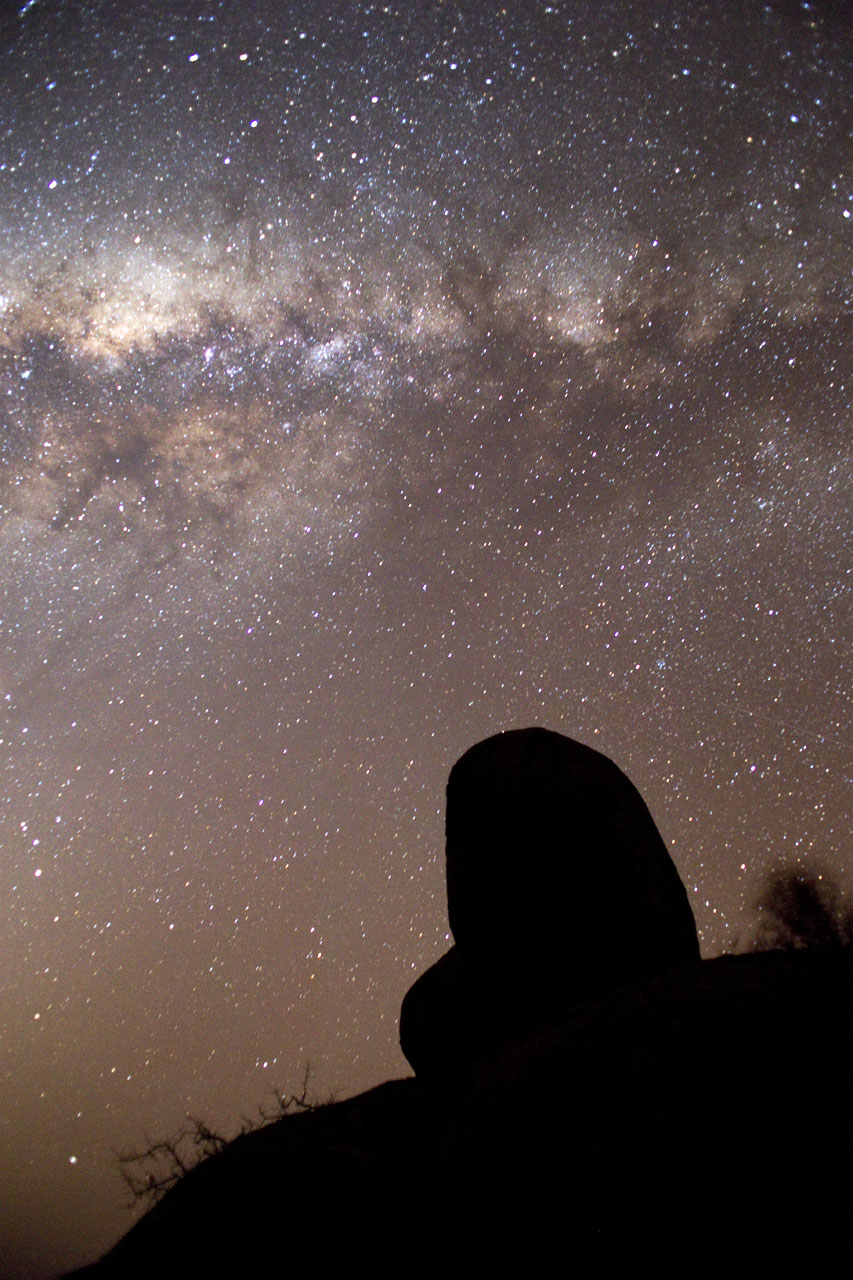
Stars at Madisa Desert Camp
Photo: We spent a night at the Madisa Desert Camp in our drive through Damaraland. It’s located in a beautiful area dominated by mounds of boulders that served as nice foreground elements for our Milky Way photography session. We were all ears though as the owner had warned us of the possibility of desert elephants walking through.
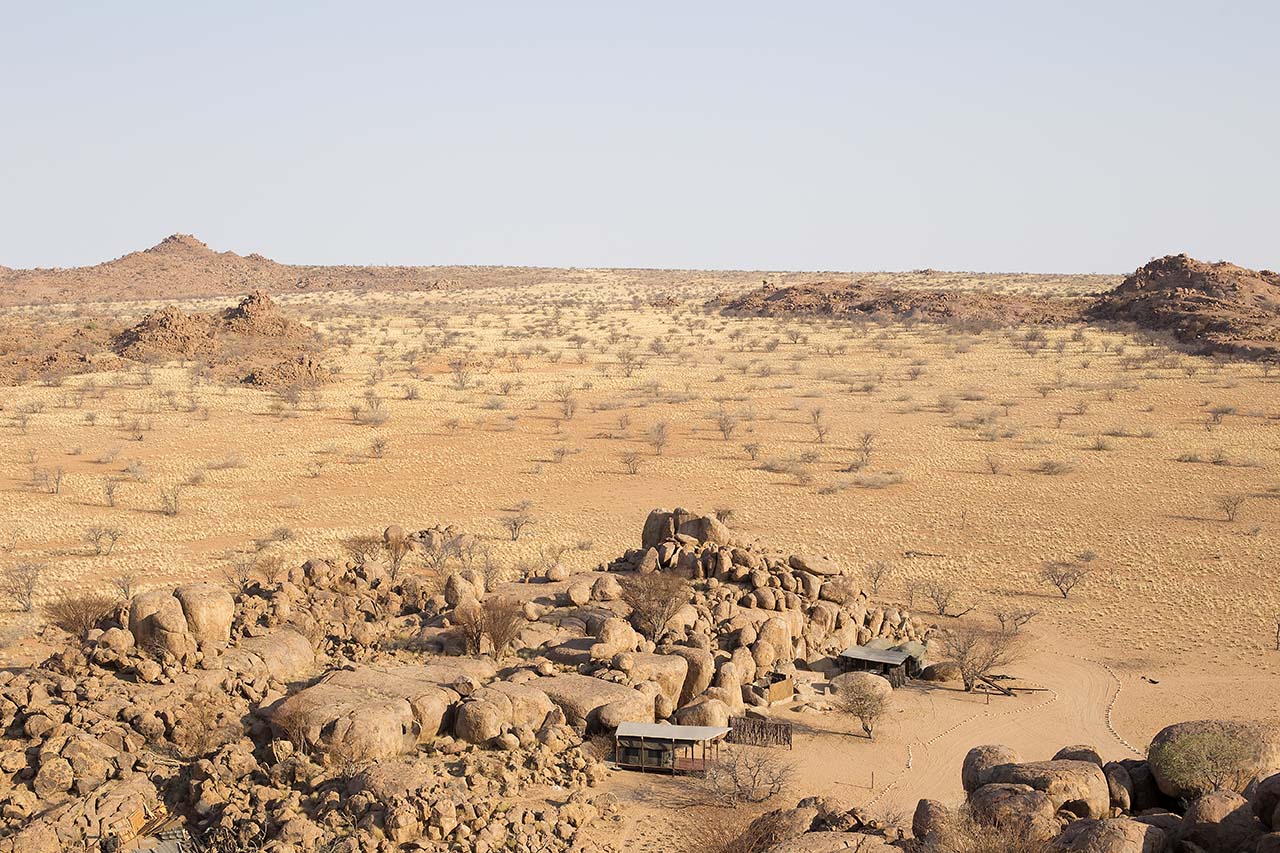
Madisa
Photo: We climbed up a mound of boulders at Madisa, our Damaraland campsite, to watch the sun go down. As we reached the top we looked down on a cinematic landscape. No wonder Mad Max Fury Road was shot in Namibia, it was the perfect fit.
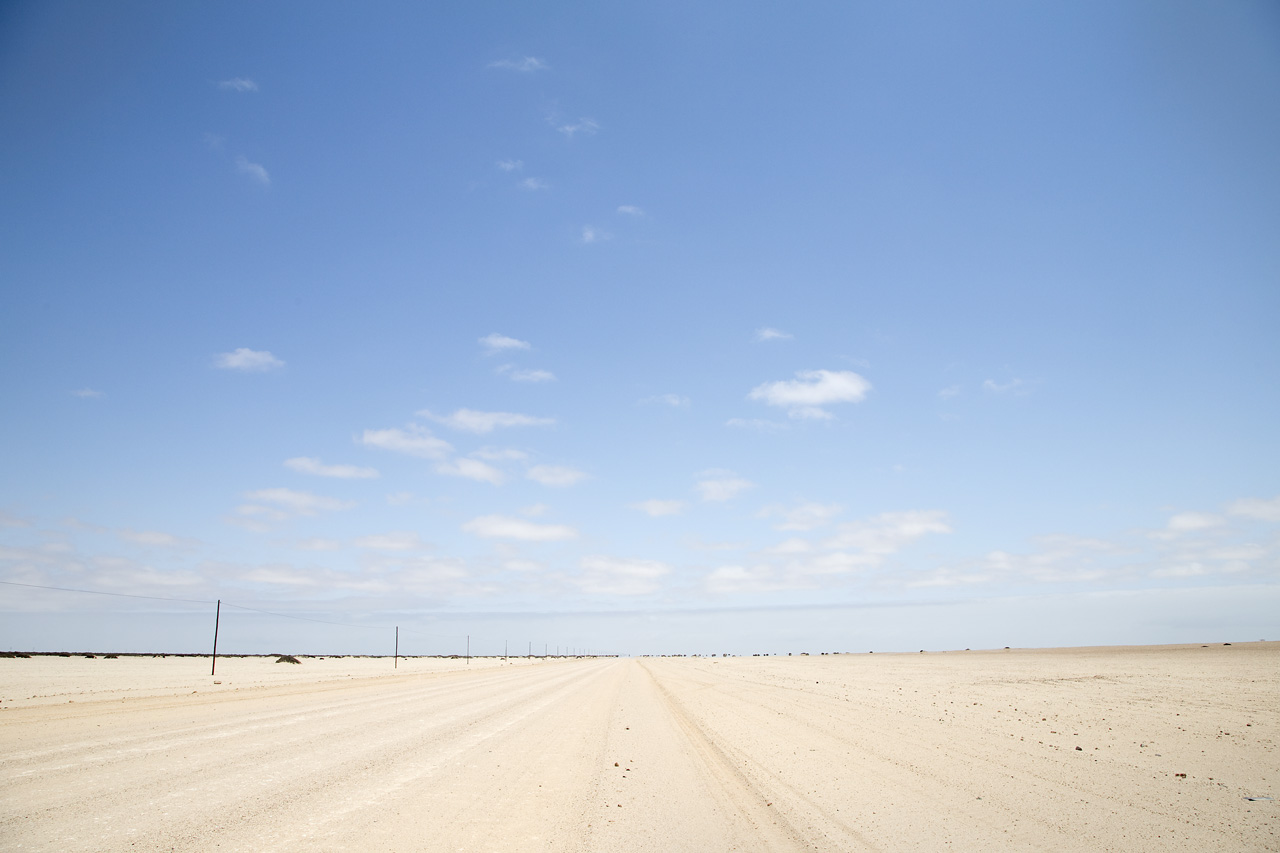
The C35 from Uis to Henties Bay
Photo: The gravel roads play a major role in the adventurous nature of a Namibian self-drive. The one here is the C35 from Uis to Henties Bay, and is actually one of the better-kept ones. Do not underestimate the dangers though, at one point we were waiting for an hour in the middle of nowhere while a helicopter rescue came for a driver who’d flipped over minutes ahead of us.
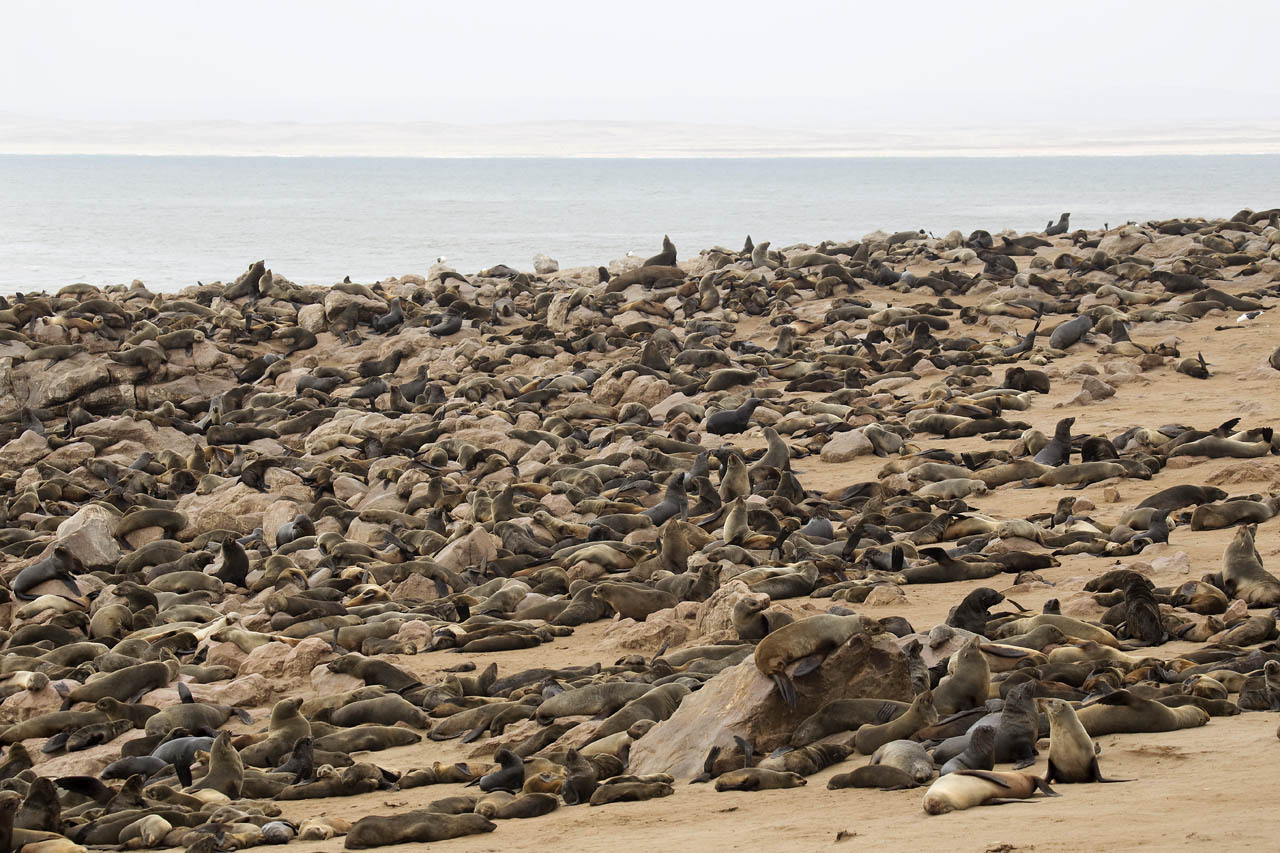
Cape Cross Seal Colony
Photo: Thousands of seals gather at a small stretch of South Atlantic beach named the Cape Cross Seal Colony. The first things that hit you are the horrid smell followed by the sheep-like cries. Drama unfolds everywhere, from vicious fights to suckling babies to scavenger birds looking for an easy meal. If you can bear the stench there are lots of great pictures to shoot.
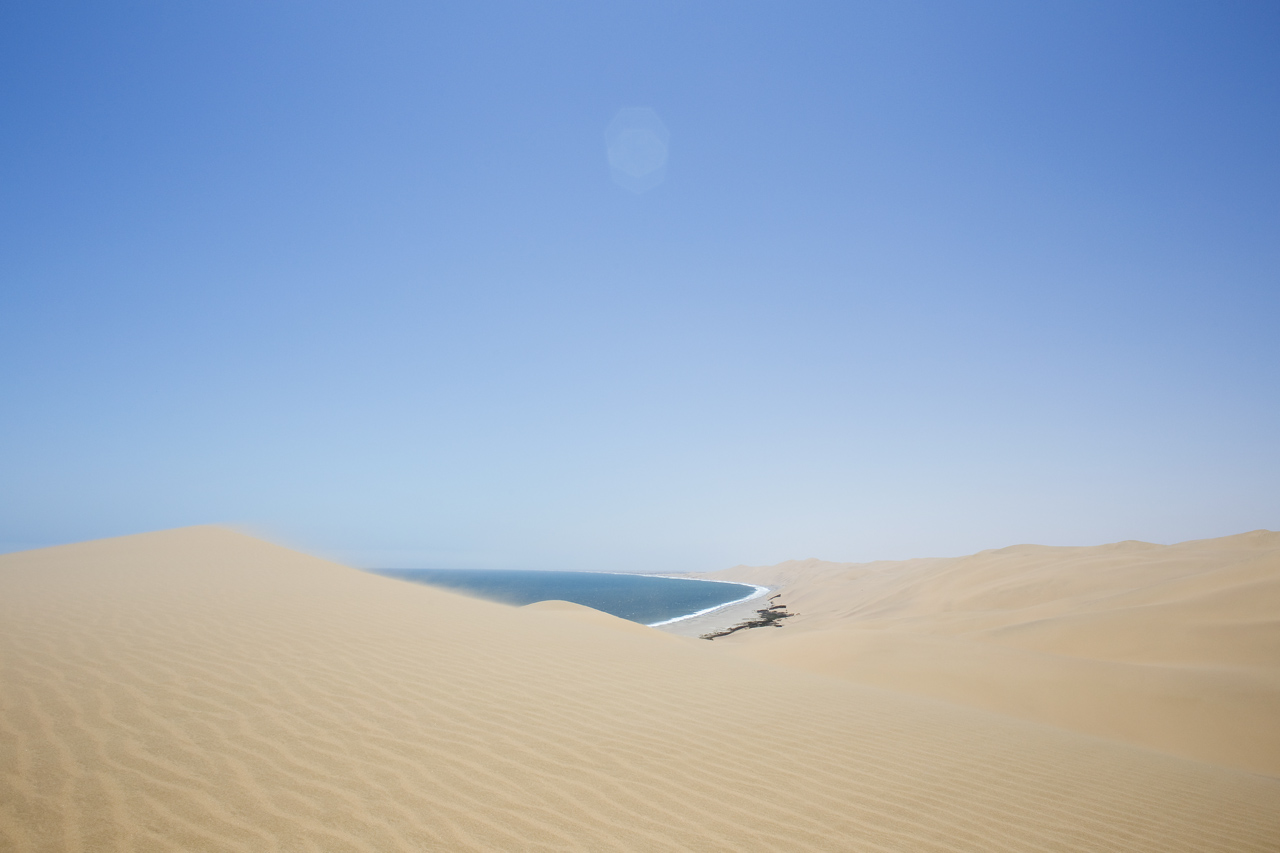
Sandwich Bay
Photo: Sandwich Bay is one of the most fascinating corners of the huge Namib desert. Hundred-meter high dunes of the finest golden sand are halted in their advance by the crashing waves of the South Atlantic. It’s not just the landscape that makes this place unique, it’s also the getting there. Easily arranged at Walvis Bay, you’ll have to hop on a 4x4 dune vehicle for one hell of a ride. Baptized by our driver as, “The Namibian rollercoaster!”
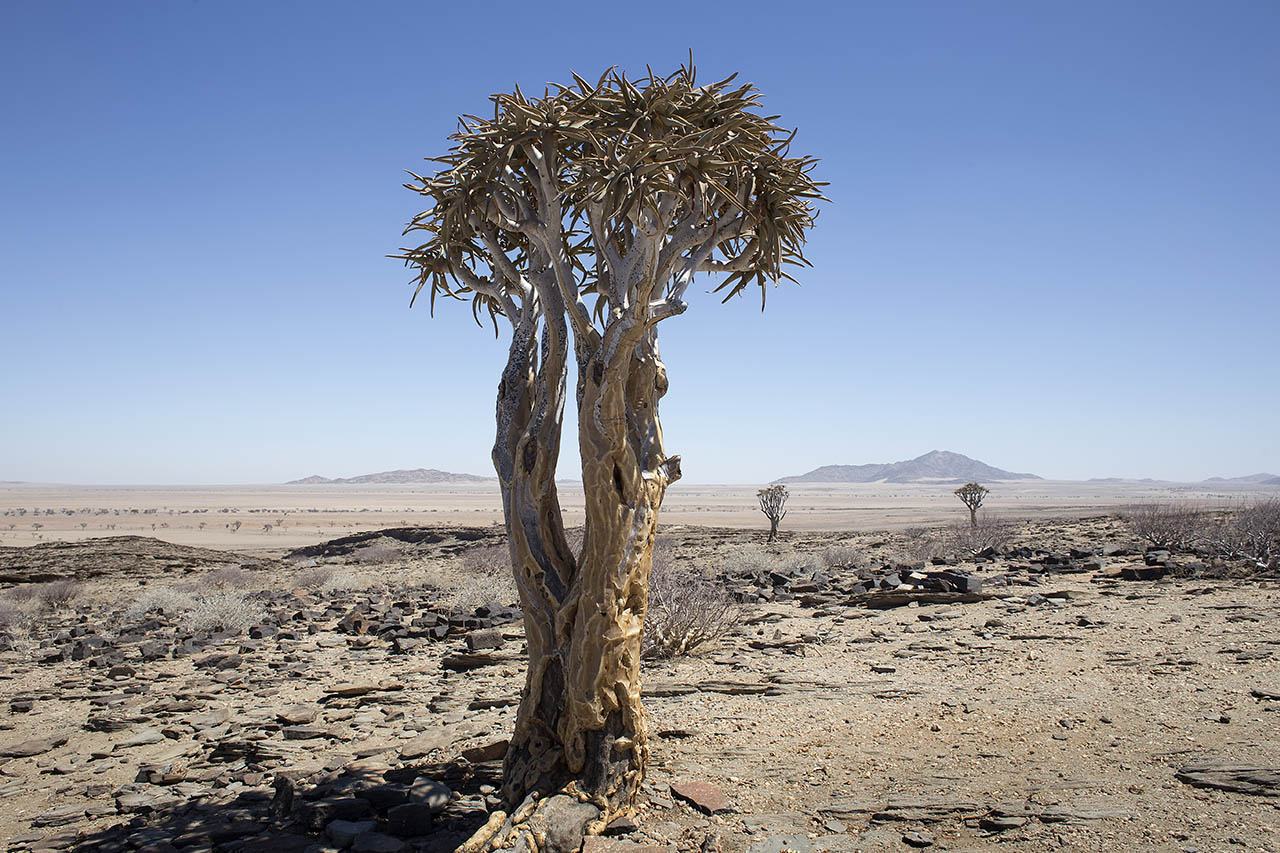
Quiver tree
Photo: The quiver tree is only found in South Africa and Namibia. These are the only ones we saw on our 16-day tour, and we would have completely missed them if it wasn’t for a fortuitous road-side bathroom break.
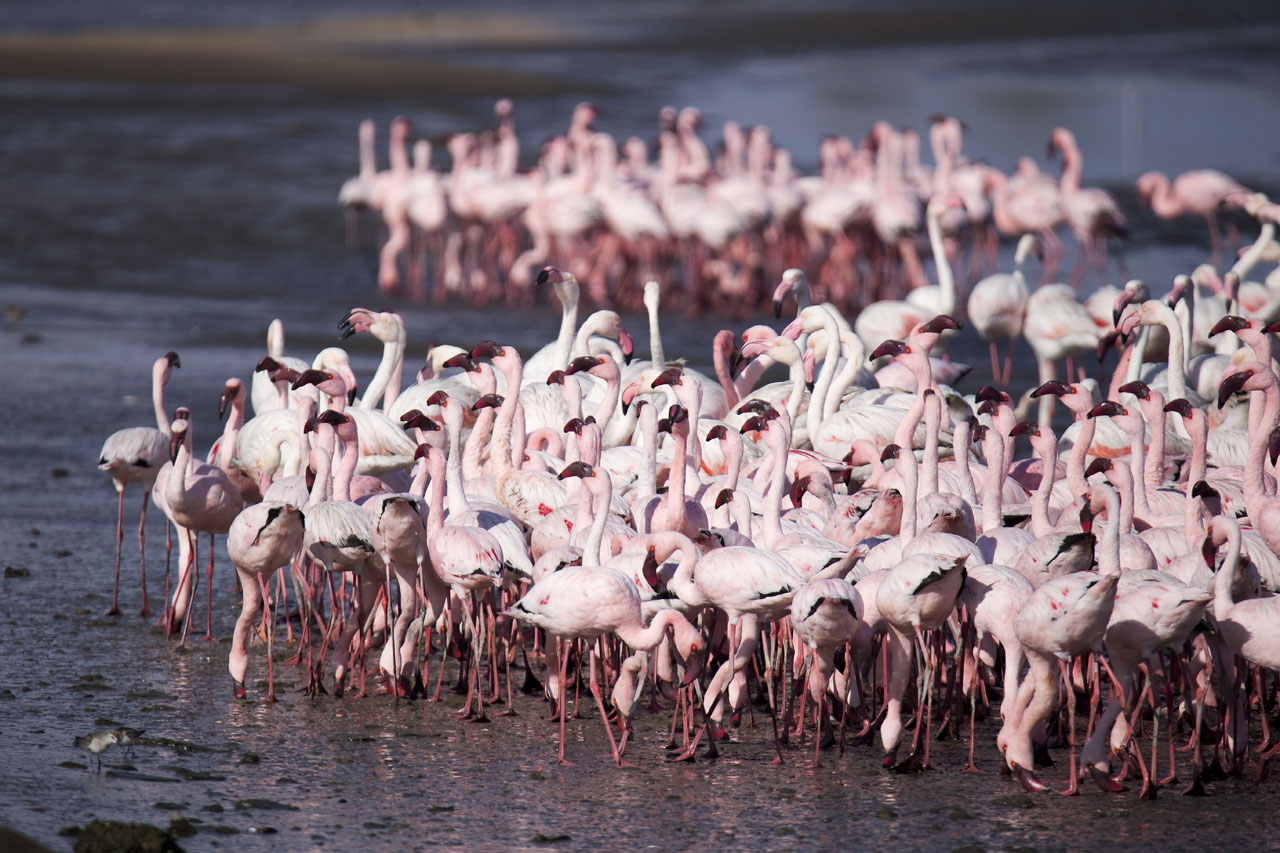
Flamingos at the Walvis Bay lagoon
Photo: The Walvis Bay lagoon attracts both Greater and Lesser Flamingos in the hundreds. It’s a fascinating spectacle, made even more so by the fact that the lagoon is smack in the middle of the city. From the photo it seems as if we were in a national park, but right behind us stretched a jogging path, a big street and the city’s finest neighborhood.
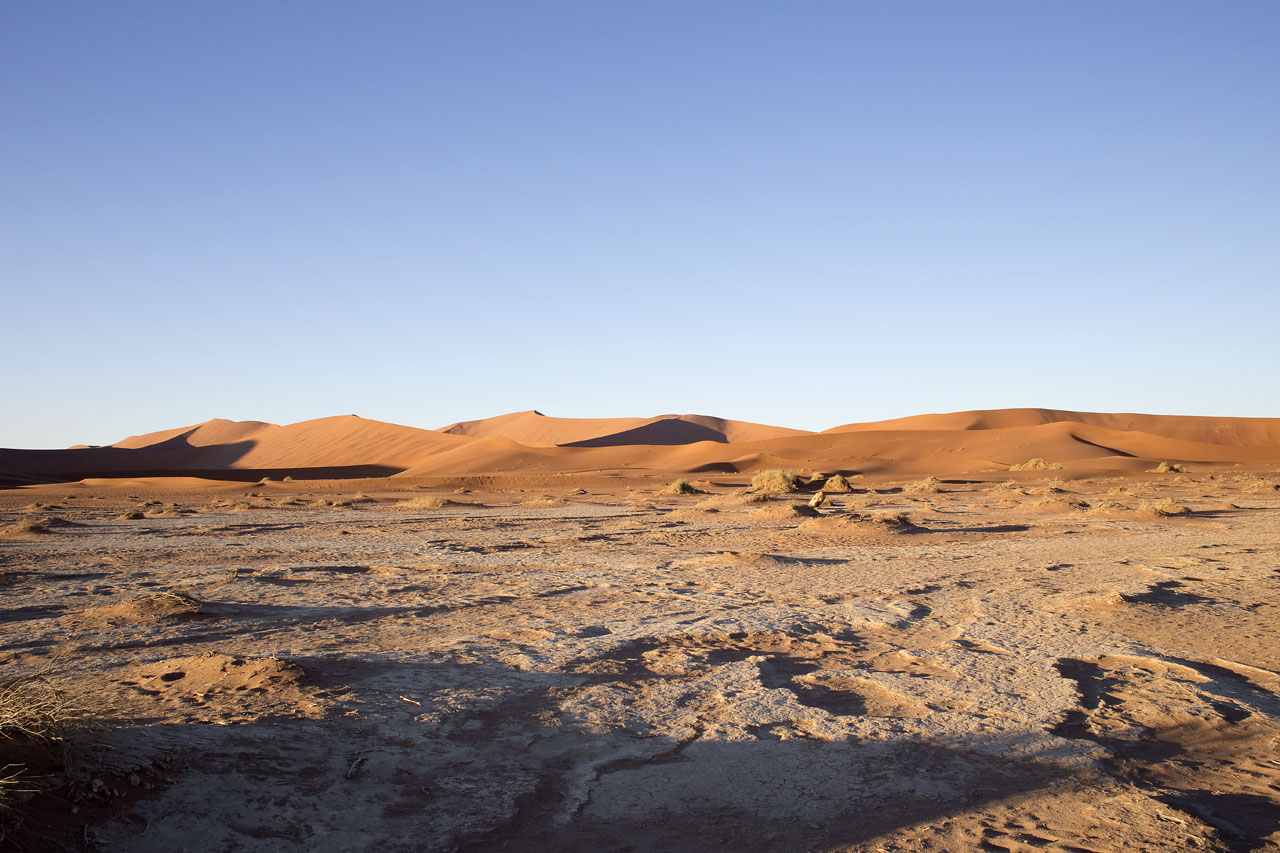
Orange dunes of the Sossusvlei
Photo: The orange dunes of the Sossusvlei area are perhaps the most photographed feature of the Namib desert. Sunrise shadows creep over the salt pan on the short walk to Deadvlei.

Dead camel thorn trees
Photo: Deadvlei is a sensory feast. The black skeletons of dead camel thorn trees strike against the orange dunes and blue skies. We arrived at around 6:45am and the illusion of loneliness didn’t last long. Half an hour later the crowds appeared and the nicest morning light slowly flattened out.
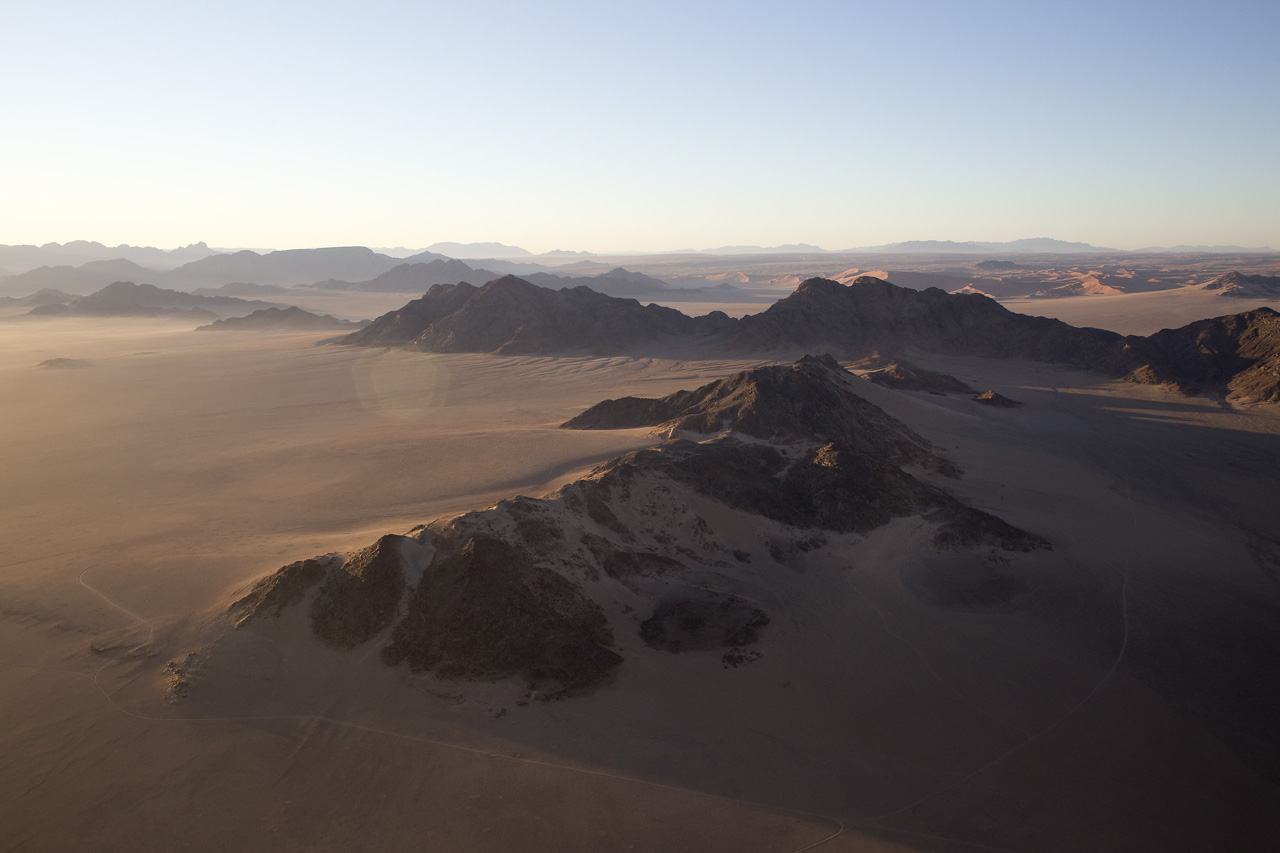
Balloon ride over the Namib-Naukluft
Photo: In 2015 I lost the ‘backgammon summer challenge’ that I play with my wife. It involves 100+ games throughout the course of four months. That meant I had to find her a big prize…so on our last day in Namibia I woke her up at 5am and surprised her with a hot-air balloon flight over the Namib-Naukluft. Sometimes you just have to splash out.
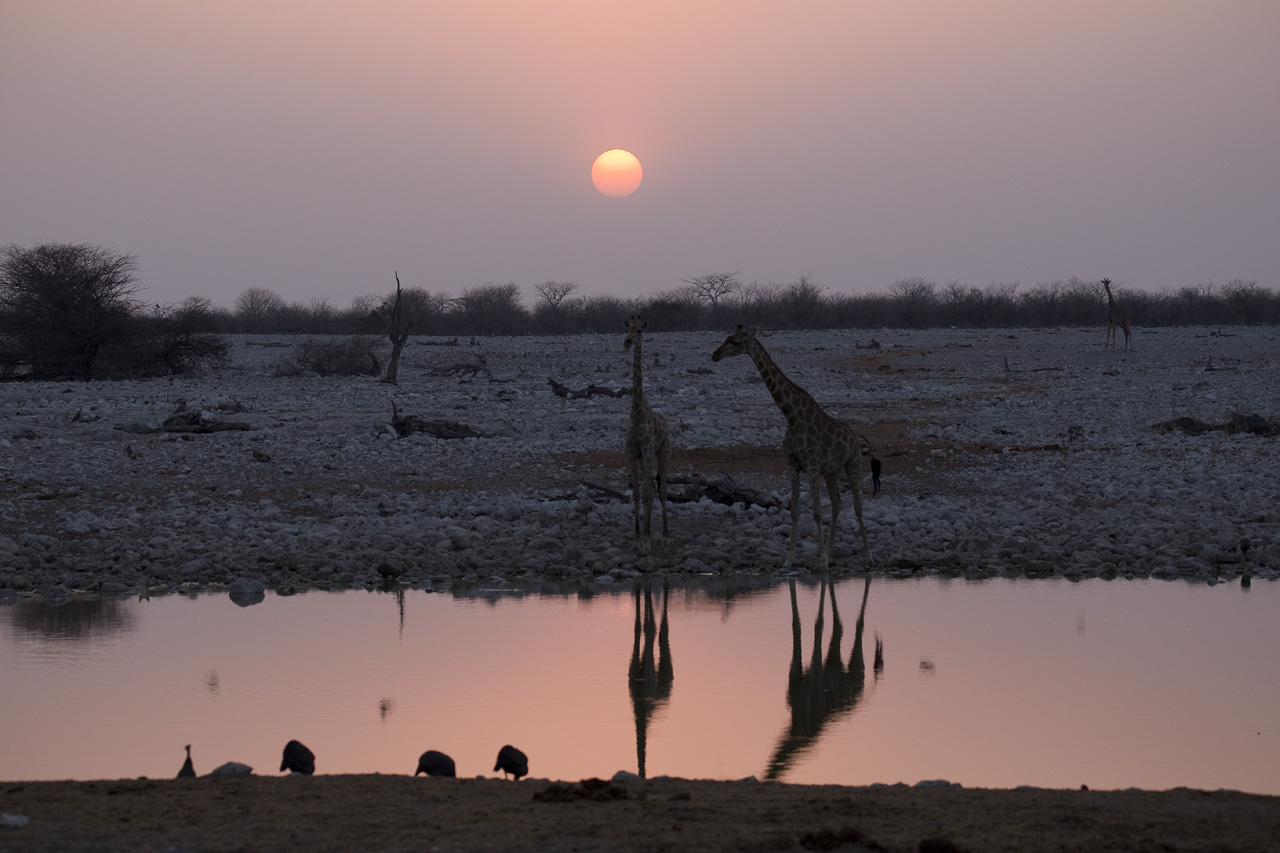
Giraffes at sunset
Photo: Etosha has strict regulations on driving times. Unfortunately for photographers, one has to be back in camp right when the best sunset light is shining. However there is always something interesting happening at the campsites, especially at Okaukuejo. In this case we counted thirteen giraffes as we saw the sun go down.
